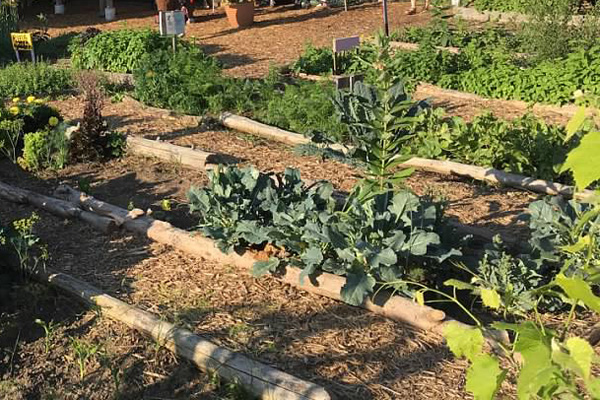The Ultimate Guide To City Blooming
The Ultimate Guide To City Blooming
Blog Article
7 Simple Techniques For City Blooming
Table of ContentsThe Best Guide To City BloomingCity Blooming for BeginnersThe Best Strategy To Use For City BloomingFacts About City Blooming UncoveredTop Guidelines Of City Blooming
Interested in expanding food for sale in the City of Chicago? Below is a list of often asked inquiries pertaining to the rules and laws that growers ought to consider when preparing a city agriculture project.
The zoning change does not modify any kind of various other codes dealing with composting, building licenses, purchasing or leasing City owned residential or commercial property, business licenses or ecological contamination. There are existing codes that control these problems and they stay completely impact and might apply to your project. Community yards are usually owned or managed by public entities, civic organizations or community-based organizations and kept by volunteers.
Urban ranches expand food that is meant to be marketed, either on a not-for-profit or for-profit basis. Due to their commercial function, metropolitan ranches require an organization license. Yes. An area yard is permitted to sell excess create that was grown on site if the sales are accessory or subservient to the yard's main purpose explained above.
The Ultimate Guide To City Blooming
The quantity of compost material can not go beyond 25 cubic lawns at any provided time according to the standards in 7-28-715 of the City's Municipal Code. Due to the fact that the soil at many new garden websites needs changing, garden compost, dirt, timber chips, or various other materials can be acquired to construct or improve the expanding area.

If a building license is required then the hoophouse will be thought about an accessory building. You can learn even more concerning the building permit requirements by getting in touch with the Department of Structures. The 25,000-square-foot size restriction is planned to stop a solitary neighborhood garden from dominating a given block or taking away from the block's existing domestic or commercial personality.
The limit does not use to gardens situated in Public Open Space (POS) districts. Can there be more than one area garden that is 25,000 square feet on a solitary block? Secure fencing is not required, nevertheless, yards that have large parking areas may be called for to mount fence or other landscape design features.
How City Blooming can Save You Time, Stress, and Money.
B1 & B2 districts call for that all commercial usage activities be carried out indoors. R districts restrict industrial activity. The regulations mirror the purpose and intent of the Zoning Code. Is fencing required for metropolitan ranches? Yes. Fences may be required, in addition to landscaping and testing, for sure car parking locations and exterior job or storage space areas depending upon area and the specific task taking place.
Yes. Urban ranches need structure authorizations and zoning authorizations prior to building. Other kinds of city evaluation might be called for depending upon particular frameworks, activities, dimension, landscaping, licensing, public health and stormwater monitoring problems. Much of these demands are determined in the job layout or allowing procedure, however, the applicant might be liable to individually recognize certain licenses or permits that might be called for.
The Department of Service Affairs and Customer Security can assist determine the specific kind of company license that's required. Off road auto parking is needed for the majority of industrial projects in Chicago. The called for number of car park spaces is based on the number of employees functioning on site and not the square video website link of the expanding area.
What Does City Blooming Mean?

Yes. A metropolitan farm can market compost material generated on website, however, the operation has to adhere to the laws in 7-28-715 of the Chicago Municipal Code. Yes. Aquaponic systems are enabled inside on urban farms in lots of zoning areas. A zoning testimonial and structure authorization is called for in order to mount structures or systems and a company license is needed as explained over.
Up to five hives or nests of honey might be maintained as an accessory use. Nevertheless, beekeepers must sign up with the Illinois Division of Agriculture. For more details about the suggested zoning change you might get in touch with the Department of Real Estate and Economic Growth, Bureau of Planning and Zoning at 312.744.8563.
, which takes location in rural locations at the side of suburban areas.
3 Easy Facts About City Blooming Explained
It can involve a motion of organic cultivators, "foodies" and "locavores", that seek to create social networks based on a common ethos of nature and community holism. These networks can develop by way of official institutional assistance, coming to be integrated right into neighborhood community preparation as a "change community" movement for lasting urban growth.
In either instance, the more straight accessibility to fresh vegetable, fruit, and meat products that might be become aware via urban farming can boost food security and food security while reducing food miles, bring about lower greenhouse gas emissions, therefore adding to environment change mitigation. Some of the first evidence of metropolitan agriculture comes from Mesopotamia.
Report this page